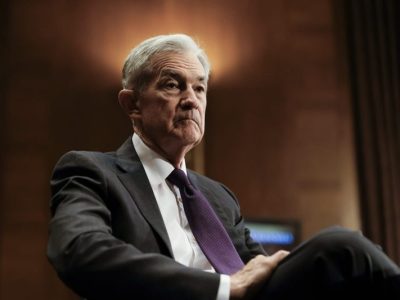
A couple months ago, in arguing that “The Fed should give everyone a bank account,” journalist Matt Yglesias cited what he took to be an instructive precedent: “Once upon a time, governments didn’t issue paper currency, and instead banknotes were printed privately by banks. But over time, we came to see this as a worthwhile public service.” His first sentence is certainly correct. Banknotes were redeemable paper claims on the issuing banks, which circulated as currency. Systems of freely competitive note-issue worked quite well, as in Canada and Scotland, with the notes of different banks trading at par against one another.
But what to make of his second sentence? I take it to mean that governments now issue paper currency because “we” learned that it is beneficial for governments to do so, rather than (or along with) private banks. Both the origin story and the evaluation are dubious. Yglesias seems to have consulted his imagination rather than the historical record about how governments came to provide paper currency. Getting that history straight was not the point of his piece, so his casual narrative may be forgiven. But for those who do want to get it straight, the story of how the Federal Reserve System of the United States was authorized to issue banknotes, and how private U.S. banks were de-authorized, may be of interest.
On the evaluative question, it should be noted that private banknotes still predominate today in the few places where their issue remains legal: Scotland, Northern Ireland, Hong Kong, and Macau. There is no compelling efficiency rationale for government provision (much less exclusive provision) of paper currency.
Before the Federal Reserve Act
Private commercial banks issued banknotes in the United States from 1781 up to 1935, with only occasional governmental and semi-governmental issues. Before the Civil War there were two federally chartered note-issuing banks, namely the first and second Banks of the United States (1791-1811 and 1816-36). Congress owned one-fifth of their initial share capital, but their notes were not obligations of the federal government. The governments of Kentucky and Vermont owned banks. Otherwise, all paper currency notes were the obligations of private institutions, even when state governments held minority shares.[1] Finally, during the Civil War, the federal government issued “greenbacks,” or United States Notes. These were not banknotes but legal-tender obligations of the U.S. Treasury, and they were not payable in gold (the nation’s metallic standard before and after the war) until 1879.
A long-lasting change in the legal rules for private note-issue came in the National Banking Acts of 1863 and 1864, and a further Act of 1866. The National Banking Acts authorized federal charters for note-issuing banks (called “National Banks” although they could not branch interstate). The charters linked the right of note issue to a National Bank’s purchase of eligible federal bonds. This requirement was a device to sell federal war bonds to the federally chartered banks, inspired by similar requirements that many state governments had instituted to sell their own bonds to state-chartered banks. These were called “bond-collateral” requirements because if a bank failed, the bonds would be sold to reimburse customers holding its banknotes. Initially a National Bank could issue notes up to 90% of the par value of the eligible bonds it held; after 1900 it could issue up to 100%.
The Act of 1866 imposed a deliberately prohibitive tax on banknotes issued by state-chartered banks—a tax high enough to drive them out of the note-issuing business. The tax was upheld by the Supreme Court in Veazie Bank v. Fenno (1869). Only National Banks thereafter issued banknotes, and only on terms dictated by the federal government.
The bond-collateral requirement on National Banks had an unintended consequence: it made the quantity of banknotes in circulation inflexible or “inelastic,” unable to vary to meet seasonal or cyclical variation in the public’s desired mix of banknotes and deposits. Inelasticity was a major factor in causing the five U.S. banking panics of the National Banking era. The Canadian banking system during the same era, by contrast, had no bond-collateral requirement on banknotes, no seasonal spike in interest rates at crop-moving time, and no financial panics.
The U.S. system could have avoided panics by adopting Canadian-style reforms: removing bond collateral requirements and allowing nationwide branch banking. Note-issue would have stayed a private business. But this solution was a political non-starter: The thousands of small state-chartered banks wouldn’t stand for the competition that liberalization of branching would bring.[2]
Enter the Fed, and Exit National Bank Notes
Instead, the Federal Reserve Act of 1913 was passed to, as its preamble says, “provide a more elastic currency.” National Bank Notes would remain in circulation, and their volume would remain tied to the volume of available federal bonds eligible to serve as collateral, but Federal Reserve Notes would provide elasticity to the total stock of currency by varying as necessary to meet variations in demand for banknotes. Note-issue by a government agency was a “worthwhile public service” only in a second-best sense, private note-issue having been hobbled by legal restrictions that rendered its supply inelastic. In Canada, with no inelasticity problem and no panics, there was no case for a central bank in 1913.
The figure below shows the volume of National Bank Notes in circulation between 1914 and 1935, together with the volume of Federal Reserve Notes. The Federal Reserve Act authorized the Fed to replace National Bank Notes in circulation with Federal Reserve Notes, by purchasing the eligible bonds from any National Banks that decided to retire from note-issue. Only a few did. The public did not show any preference for Federal Reserve Notes. The volume of National Bank Notes dropped about 30 percent in 1914-16. Between 1916 and 1932 the volume of National Bank Notes was rather steady. In 1932 the volume of paper currency in circulation was about 20 percent National Bank Notes (about $650 million), and about 80 percent Federal Reserve Notes (about $2600 million). National Bank Notes bulged in 1932-34 with the passage of legislation that expanded the range of eligible collateral to include higher-yielding bonds.
The coexistence of Federal Reserve Notes and National Bank Notes ended after 1935. What ended private note-issue was a further tightening of the noose of legal restrictions. As of 1930, the Treasury bonds that bore the “circulation privilege” were callable. On August 1, 1935, the U.S. Treasury, following an executive order given by President Franklin Roosevelt that March, called in and retired all of the bonds that bore the circulation privilege. National Banks then held $658 million of such bonds as collateral against their $658 million of notes in circulation. With the required bonds unavailable, National Banks lost the right to issue. The Federal Reserve paid par value for the bonds in its own liabilities, allowing the banks to recall and redeem their banknotes by paying their customers with Federal Reserve Notes.
An article in the Indianapolis Times on the 11th of March 1935 about the plan to retire National Bank Notes was appropriately headlined: “U. S. to Take Control over All Currency.” Treasury officials rationalized the measure as giving the federal government greater power over the monetary system, as though a more centralized system were ipso facto better: “Government officials said the move was another step in the simplification of the monetary system and a vesting of complete power in the hands of the Federal government. Previously, national banks have been permit[ted] to issue their money independent of whether or not it was needed in circulation and sometimes in conflict with other monetary steps of the government.” The supposed conflict was not specified. No conflict is evident in the figure, showing hardly any variation in the volume of National Bank Notes between 1916 and 1932.
The imagined benefits of centralized control rested on wishful thinking. Few economic historians today would give a passing grade to the Federal Reserve’s conduct of monetary policy in the decade before or in the decade after 1935. The Fed’s post-Depression performance has also left a lot to be desired, but not for lack of control over the currency.
______________
[1] See Susan Hoffman, Politics and Banking: Ideas, Public Policy, and the Creation of Financial Institutions (Johns Hopkins University Press, 2001), pp. 75-76.
[2] George A. Selgin and Lawrence H. White, “Monetary Reform and the Redemption of National Bank Notes, 1863-1913,” Business History Review 68 (Summer 1994), pp. 205-43.
The post How U.S. Government Paper Currency Began, and How Private Banknotes Ended appeared first on Alt-M.










